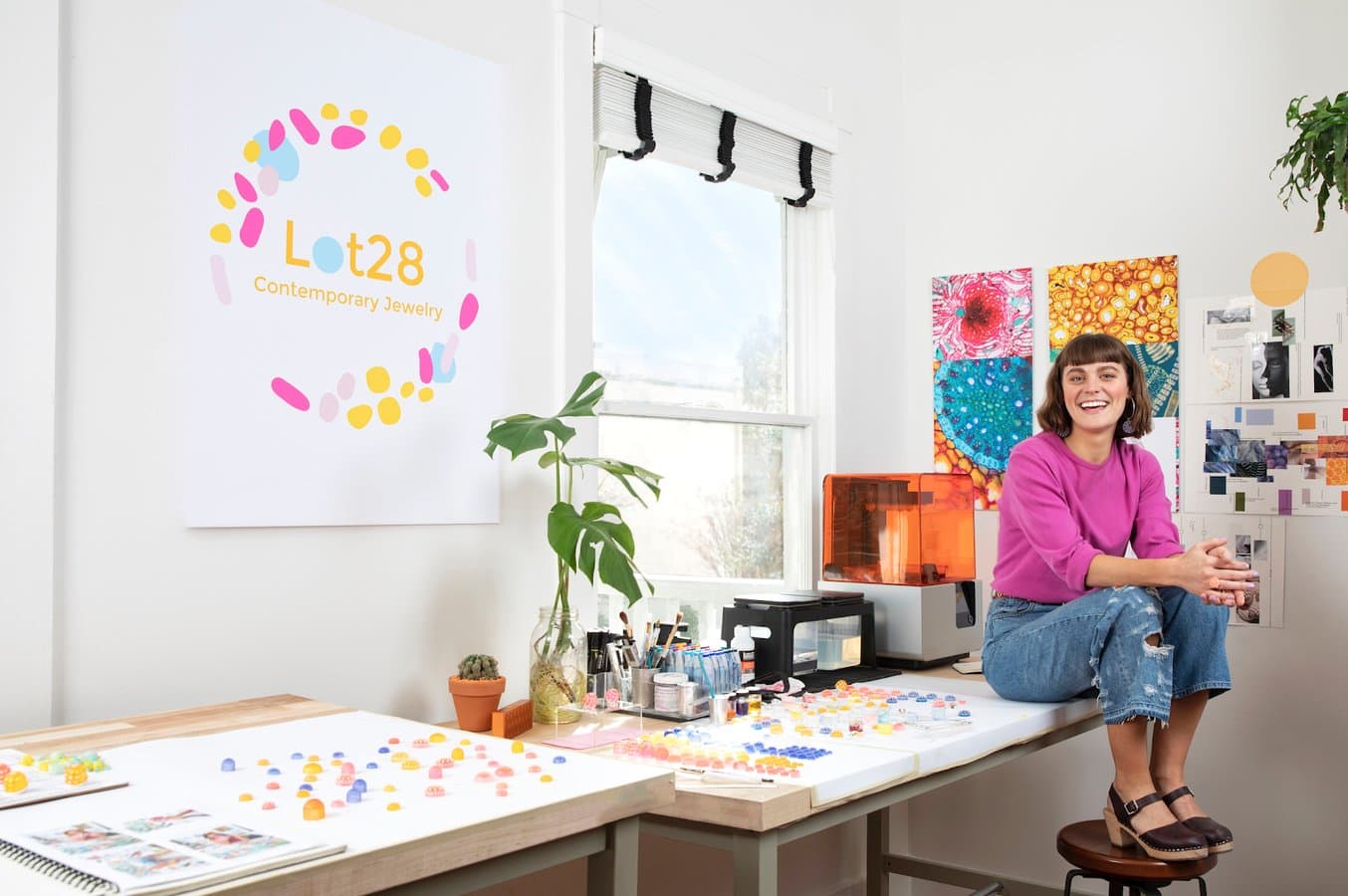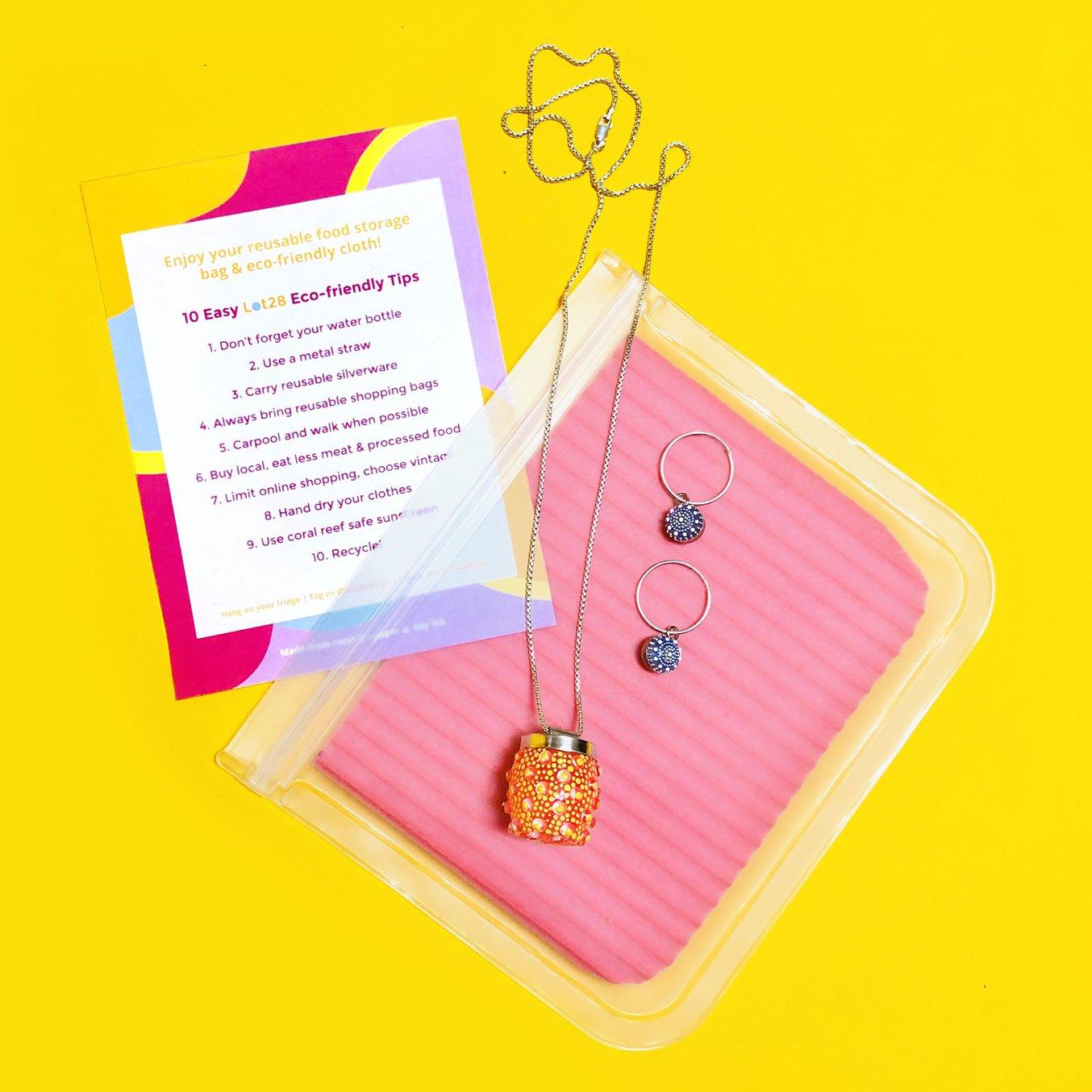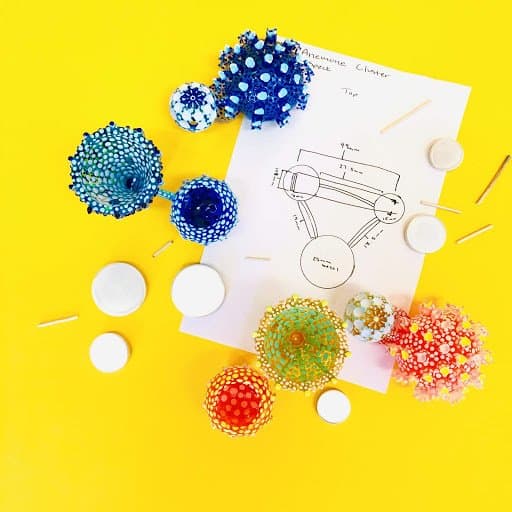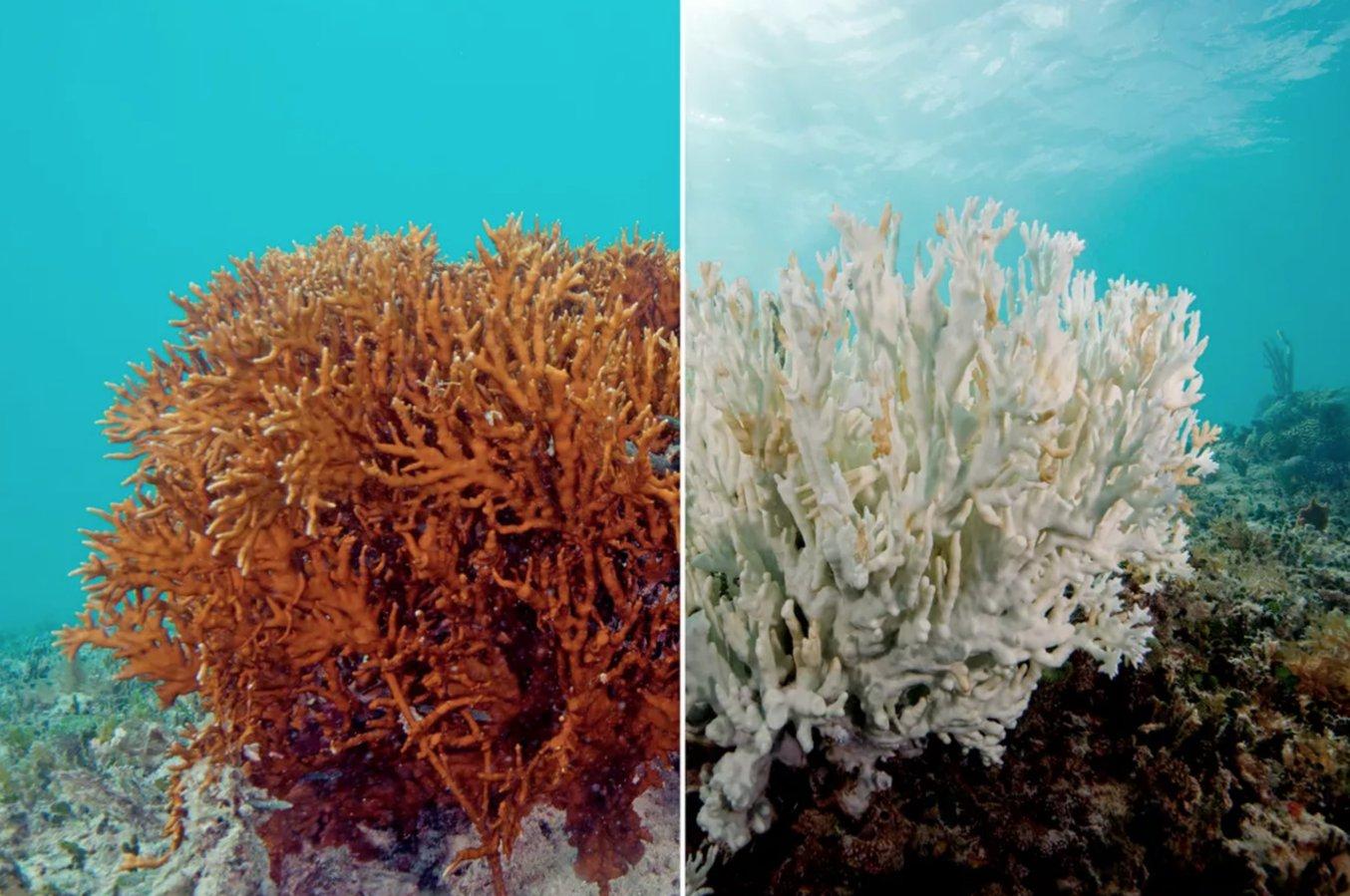
If you attended New York City Jewelry Week (NYCJW) this past November, you might have run into Formlabs Ambassador Jocelyn DeSisto. After graduating from Savannah College of Art and Design in 2017 with a BFA in Jewelry Design, Jocelyn launched a contemporary design studio in NYC called Lot28. Her luminous coral-inspired jewelry uses Formlabs Clear Resin as a foundation along with hand fabricated sterling silver.
During NYCJW Jocelyn hosted several workshops at the Cooper Hewitt Museum where participants explored 3D printing, painting, and traditional jewelry techniques while designing their own accessories. From there, she ran an interactive popup display in collaboration with artists Cassondra Morrison and Bernie Thompson, and rounded out the week with a panel discussion on sustainable packaging during the NYCJW Full Circle event on the FIT campus in Chelsea. Jocelyn’s work was also featured at The Four Ring Circus exhibition by Icons at Play and SCAD’s Design Innovation Popup at Industry West throughout the week.
Hearing about her experiences at NYCJW, we were eager to sit down with Jocelyn to learn more about what inspires her and how she is using Stereolithography (SLA) 3D printing to address not only sustainability in the jewelry industry, but also to generate awareness around coral bleaching.
Read on to hear from Jocelyn in her own words!
Why Sustainability Matters
What are some sources of waste in traditional jewelry making? How can the industry do better?
Finishing college, I was eager to work as a jeweler but was overwhelmed by the lack of social impact in the industry. I felt as though there was more to be done. The jewelry industry is making strides, demanding better environmental awareness, but there is still a long way to go.
One of the areas we have focused on this year at Lot28 is our zero-waste packaging.
Packaging is a wasteful bi-product of almost every physical product. In the jewelry industry specifically, bubble wrap and protective packaging are a must when shipping jewelry to ensure it arrives safely to its final destination. With Lot28, we went through multiple iterations of how we could make our packaging more sustainable. First [by] asking how we could extend the life of our packaging as compared to the single-use industry standard. The solution was our zero-waste packaging which we launched this past summer of 2019.
The packaging is composed of reusable products which protect the jewelry but can then be repurposed. Instead of a cardboard box, luxe business cards, and synthetic foam, we opted for a reusable silicone food safe bag, recycled paper with soy-based ink postcard, and a soft sponge for cushion. Each part of the packaging can be repurposed once it arrives to our clients.
The post card is double sided with a handwritten thank you note on one side and 10 eco-friendly tips that you can incorporate into your daily routine on the back.
Within our studio, we strive to optimize our workflow to be low impact conscious, focusing on extending the life of our tools over single-use. Some of this includes using reusable cloths instead of paper towels, biodegradable gloves, and researching the practices used in our supply chain. We source all of our sterling silver from Rio Grande who has taken big steps in lowering their carbon footprint within their facilities. Since 2010, Rio Grande’s facilities have been completely powered by solar energy, making it a net-zero facility. We look forward to continuing to hone our dedication to efficient environmental studio practices in 2020.

Walk us through your process. How does Formlabs SLA 3D printing play a role in your work?
3D printing became the solution to my design problem. My work involves repeated forms that are covered with small surface detailing. Initially, my career as an artist started with pen and paper. Stepping into the 3D space, I wanted to translate my drawings into 3D forms, but was limited by my ability to replicate the hundreds of tiny surface detailing that my work requires.
Digital fabrication provided the perfect solution. Similar to a template of a drawing, I am able to maximize design time when creating a 3D model and then print multiple iterations without the lag of hand fabrication time.
My process is a push and pull between digital fabrication, hand painting, and traditional jewelry fabrication techniques. First, I study the microscopic structures related to the environmental topic I’m focusing on. Our focus for 2019 was generating awareness about the growing issue of coral bleaching. Once I have narrowed down the cellular structures, I translate them into 3D models. I break the forms down into their most basic shapes and build upon them.
Once the 3D models are drafted, I test print the forms on the Formlabs Form 2 3D printer. The Form 2 allows me to iterate through size, fit, and proportions quickly and directly in our studio.
Bringing SLA 3D printing into our studio process was a step towards our sustainability goals for 2019. With the ability to print on-demand in-house, we are able to maintain a minimal inventory that results in minimal waste. Previously we were outsourcing our 3D printing, which resulted in long production times, heavy upfront investment, and wasteful shipping methods.
After the forms are finalized and 3D printed, the color is added. I have always been inspired by how an artist can take a material, manipulate, and transform it into something totally their own. After the Form 2 prints are cleaned, I apply a base layer of dye. Next, opaque paint is applied to the raised surface texturing. The shapes of the texturing dictate what patterns will appear when the surface is painted.
After the painting is finished and sealed, the pieces are tension set in sterling silver. The gloss finish increases the luminosity of the 3D prints, creating an appearance similar to Venetian glass.

What sparked your interest in sustainability, and the preservation of coral in particular?
Environmental conservation and awareness has always been a part of my life. I use design to express and share my passion for our environment. From the vibrant colors to the exotic forms of coral reefs, I have always been enamored by our oceans. As an avid lover of Blue Planet, I came across the growing issue of coral bleaching. I was blown away that a global issue of this magnitude was not more widely known. As I began researching and learning more about the underlying causes of coral bleaching, incorporating this concept into my work was a natural progression.
Due to the effects of climate change, we have lost over 25 percent of the world's living coral in the past 30 years. The United Nations predicts that by mid-century, we could lose functional coral reef ecosystems across most of the world if we don’t take immediate action in protecting our oceans. If you are interested in learning more about the effects of coral bleaching I highly recommend watching Chasing Coral.
Since most individuals don’t interact with coral reefs on a daily basis and because they are underwater, the issue remains out of sight and out of mind. Lot28 is my interpretation of a daily reminder. A daily reminder of our impact on the environment and ability to enact change.

The Future of Lot28
Lot28 has big plans for 2020! 2019 was an incredible first year for them, filled with exciting accomplishments, challenges, and inspiration. Now, the company is developing a new body work of work, some of which will incorporate a new environmental focus.
Lot28 is always interested in hearing what environmental topics their community is passionate about. You can reach them, or get updates on future products, on Instagram at @Lot28design.
This interview has been edited and condensed for clarity.

